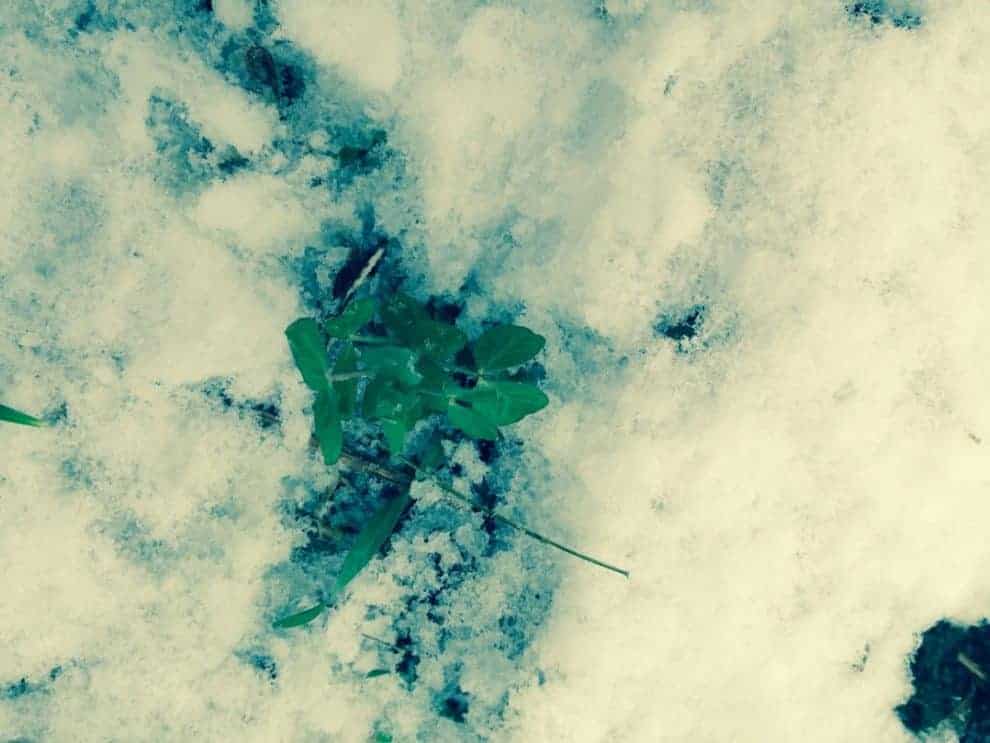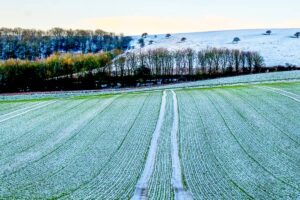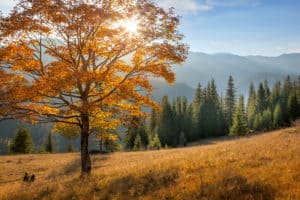I am an Austrian Winter Pea working hard this cold winter to improve the land where I was planted. Last October, I was mixed in with some rye and then drilled into the soil about an inch deep. My farmer planted the rye so that I could soak up excess nitrogen (N) that might be leftover from last year’s crop. And he planted me in with the rye so I could produce (fix) nitrogen to feed the new crop he will plant this May or June. I have been slowly growing here ever since though I have very little foliage to show for it right now. But underground, I am steadily growing “down and out” a little bit every day. In fact, my tap root and lateral roots are growing as far as they can until I am all done later this spring. My role as a cover crop is to improve my farmer’s soil health which will translate into improves soil drainage – something very important to Delmarva farmers.
Technically, I am what agronomist call a “winter annual” so I am growing even when the snow covers the ground and the air temperatures are bitterly cold. Most of the growth occurs below the soil surface but come spring – I’ll have plenty of stems, leaves and flowers to get some attention. Until then, I will humbly serve as a “cover crop” and do my part to strengthen the soil profile of my Delmarva farmer.
Since we are talking about “cover crops”….Decades ago, farmers around here didn’t spend so much time talking and thinking about cover crops. Sure, some fields were planted with them to address a specific problem or need. Today, Delmarva growers routinely plant, drill or aerial seed their cover crops as a standard part of their farming approach. Today, cover crops are a regular part of the conversation and the planning process. What shapes the conversation today is what problem or objective the grower is actually working towards. The more common “reasons” that growers use cover crops are:
- To reduce soil compaction which could have been caused by working the ground a bit too wet last spring.
- To get ahead of some of their hard-to-control weeds that have been “breaking” through their traditional weed control programs.
- To insure that their soils are not “bare” at corn and soybean harvest, growers are contracting with their “pilot” to fly on a cover crop.
- To improve soil health.
The reasons for planting cover crops does vary from farmer to farmer and year to year – but Delmarva farmers are certainly thinking about planting cover crops every season.
This content may not be used or reproduced in any manner whatsoever, in part or in whole, without written permission of LANDTHINK. Use of this content without permission is a violation of federal copyright law. The articles, posts, comments, opinions and information provided by LANDTHINK are for informational and research purposes only and DOES NOT substitute or coincide with the advice of an attorney, accountant, real estate broker or any other licensed real estate professional. LANDTHINK strongly advises visitors and readers to seek their own professional guidance and advice related to buying, investing in or selling real estate.










my friend planted Austrian snow peas this winter in his greenfields, deer love this! good for the soil a plus.